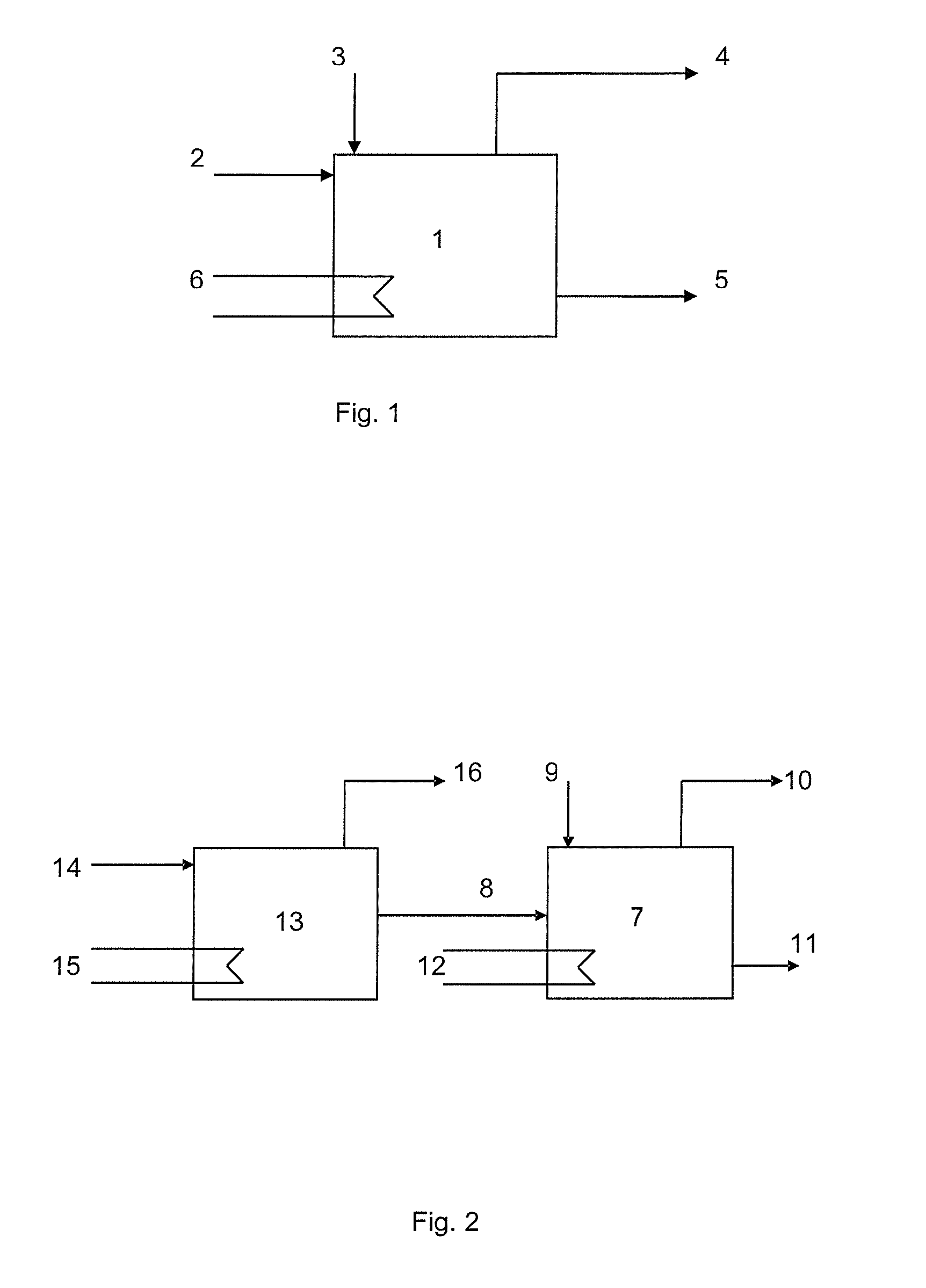Process for producing biogas
a biogas and process technology, applied in biochemical apparatus and processes, gas production bioreactors, waste based fuels, etc., can solve the problems of digester upset, total methane production falling, etc., and achieve the effect of reducing the amount of hydrogen sulphid
- Summary
- Abstract
- Description
- Claims
- Application Information
AI Technical Summary
Benefits of technology
Problems solved by technology
Method used
Image
Examples
example 1
[0089]The process according the present invention has been applied in this example in single stage mesophile anaerobic digesters. Three identical digesters were used and were operated on a quasi-continuous mode: the digesters were fed with the organic matter once daily, and run on a five months period. The first digester, referenced KF1, was used as control digester and no buffering reagent containing sodium bicarbonate was added to. The two others digesters, referenced VF2 and VF3, were run according the present invention.
[0090]The three anaerobic digesters were made of transparent double-walled acrylic polymer (internal diameter 220 mm and height 305 mm), having a working volume of 10.5 liters. Each digester was equipped with a computer-controlled drive anchor agitator (height 280 mm, broadness 210 mm of the anchor element, rotating speed 50 rpm, duration 2 minutes every hours). The periodical agitation was sufficient to periodically homogenize the digestion medium content and sur...
example 2
[0142]In this example, the same three 10.5 liters digesters as in example 1 were used. Semi continuous trials according VDI recommendation 4630 (VDI-4630: VDI Society of energy engineering, fermentation of organic materials-2006) were performed.
[0143]The goal of that example was to test the recovery of a digester after a disruption accident with a down fall of pH-value provoked by an excess of acidic feeding material.
[0144]The organic feeding matter of the three digesters was a similar mixture (cow and pig manure / maize silage / grass silage) as to the one of example 1 and in same proportion as example 1. The characteristics of the organic feeding matter of example 2 are given in table 10. The addition took place on five days in the week, whereby the mean supplied quantity of organic matter refers to the entire week. The three digesters were fed five days per week with 60 g of organic feeding matter per day plus distilled water to remain at constant volume. This daily feeding load was ...
example 3
[0161]In this example, the organic matter (mixture of cow and pig manure, maize silage, grass silage) was identical to the one of example 1.
[0162]400 g of seeding sludge with the characteristics according VDI 4630, and 17.5 g of organic matter were put in polyethylene bottles, with different bone char quantities given in table 13. Each bottle test was doubled and referenced as KK x and KK x′, with x designating the test number.
[0163]The bone char had a specific surface area of about 100 m2 / g. The chemical analysis of the main constituents and micronutrients of the bone char is given at tables 14.a and 14.b.
TABLE 13Bone char quantities added.batch-bottle-numberbone char quantities in mgKK 1 and KK 1′597.50KK 2 and KK 2′298.75KK 3 and KK 3′149.38KK 4 and KK 4′74.69KK 5 and KK 5′37.34KK 6 and KK 6′18.67KK 7 and KK 7′9.34KK 8 and KK 8′4.67KK 9 and KK 9′2.33KK 10 and KK 10′1.17KK 11 and KK 11′Control without bone char addition
TABLE 14.aBone char chemical composition.Content% of dry matte...
PUM
| Property | Measurement | Unit |
|---|---|---|
| concentration | aaaaa | aaaaa |
| concentration | aaaaa | aaaaa |
| diameter | aaaaa | aaaaa |
Abstract
Description
Claims
Application Information
 Login to View More
Login to View More - R&D
- Intellectual Property
- Life Sciences
- Materials
- Tech Scout
- Unparalleled Data Quality
- Higher Quality Content
- 60% Fewer Hallucinations
Browse by: Latest US Patents, China's latest patents, Technical Efficacy Thesaurus, Application Domain, Technology Topic, Popular Technical Reports.
© 2025 PatSnap. All rights reserved.Legal|Privacy policy|Modern Slavery Act Transparency Statement|Sitemap|About US| Contact US: help@patsnap.com



